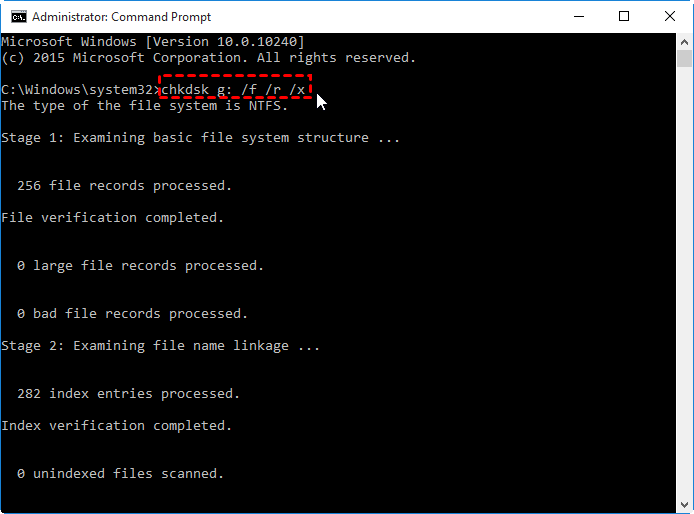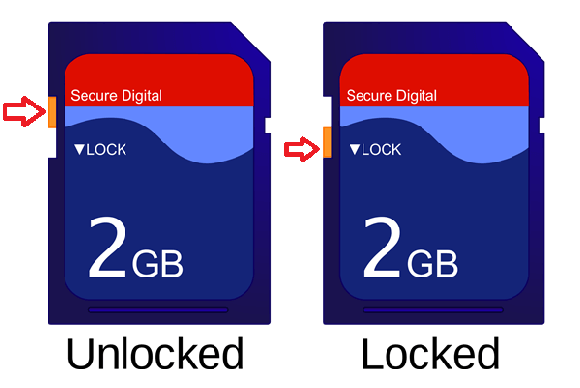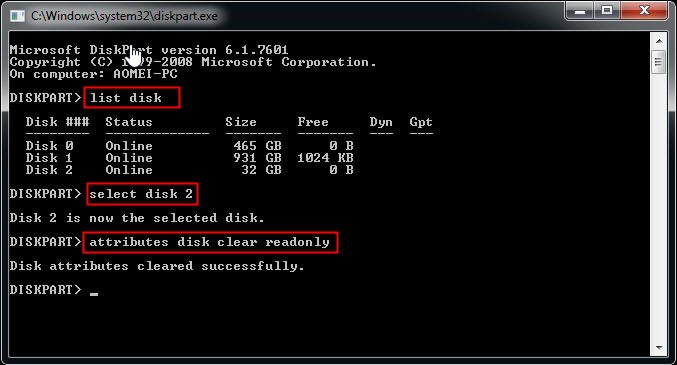How to solve the problem of Windows unable to format flash drive? Here provides you four methods to fix this issue.
Method 1. Eliminate possible virus
USB flash drives are very portable and can be connected to computer easily via USB drive to backup or transfer data, so many users often carry them around and use them on various computers, making it easy to infect virus. In this case, you can make use of a reliable anti-virus tool to remove malware or virus.
After that, you can try to format the flash drive again. If you still cannot format the USB flash drive, proceed to the following methods, please.
Method 2. Check and fix bad sectors on the flash drive
As we all know, the flash drive and other storage devices consist of sectors, the smallest unit for data storing. Files stored on them usually occupy discontinuous sectors. The bad sectors means the sectors are damaged and cannot be read or written, so the formatting process can be disrupted. To check and fix bad sectors, you can use CHKDSK.exe tool.
1. Press “Win+ R” keys on your keyboard to open “Run” dialog, input “cmd” and press Enter to open Command Prompt window.
2. In the window, enter “chkdsk g: /f /r /x” and hit on Enter to execute this command.
Note: replace g with the drive letter of your flash drive.

Method 3. Disable write protection attribute before formatting
Besides, Windows will be unable to format flash drive which is write-protected. But the flash drive can become write-protected due to different causes such as physical lock, being set into read only mode, or wrong registry settings or corrupted file system. Different causes need different solutions.
1. Check the physical switch
Have a check at your flash drive at first, if there is a physical lock switch on the side, you can slide the switch to the unlock area. Then, connect it to your computer, and you can format it in your need.

2. Clear read-only attributes with Diskpart utility
Connect your flash drive to the computer at first, and make sure it can be detected.
1. Press “Windows” + “R” combination on your keyboard to open the Run dialog.
2. Then type “diskpart” in the Run dialog box, click “OK” to open the Diskpart Command Prompt.
3. Type “list disk” and press “Enter”, all the disks connected to the computer will be displayed.
4. Type “select disk n”, here n refers to the drive letter of your flash drive. Then, press “Enter” to continue.
5. Type “attributes disk clear readonly”, diskpart will change your USB’s properties so that it is no longer read-only.

After that, you can format flash drive in your need.
3. Remove write protection through editting the registry
Connect your flash drive to the computer at first, and make sure it can be detected.
1. Open Run dialog, type “regedit” and hit Enter or click “OK” to open the Registry Editor.
2. Access to the following path:
“Computer\HKEY_LOCAL_MACHINE\SYSTEM\CurrentControlSet\Control\StorageDevicePolicies”
3. Double click the “WriteProtect” and change the value from 1 to 0.
4. Close Regedit and restart your computer. Connect your USB drive again and you should be able to format it successfully.
Method 4. Fix “can’t format flash drive” error with CMD
Connect your flash drive to the computer at first, and make sure it can be detected.
1. Click “start” and type “command prompt”.
2. Then, right click “command prompt” and select “run as administrator”.
3. After that, type “diskpart” and press “Enter”. Then execute the below commands in turn:
- list disk
- select disk n
- clean
- create partition primary
- format fs=fat32 quick: If you want to format to NTFS, type “format fs=ntfs quick”.
